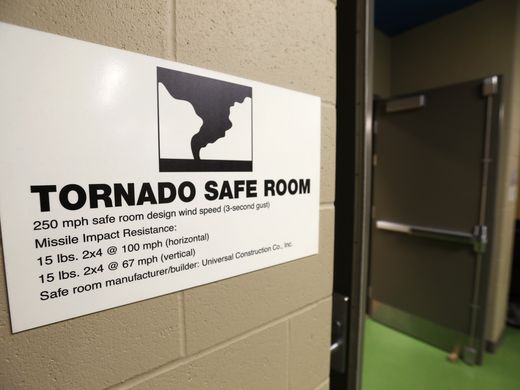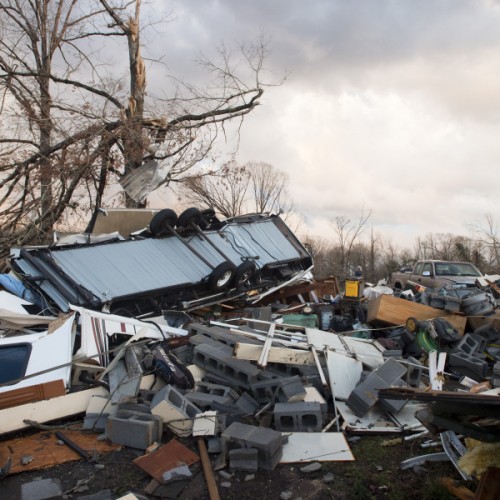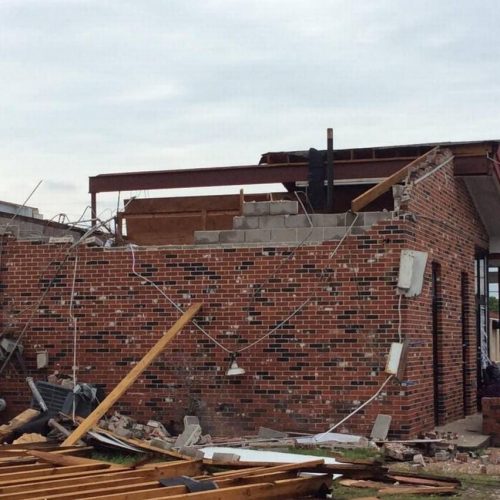In the wake of the May 2011 tornado, providing a safe refuge for students — every last one of them — became a top priority for school officials in Joplin.
Every Joplin school was rebuilt, renovated or retrofitted to include tornado “safe rooms” or shelters in the years that followed.
“It was a sense of security for our families, for our students. It wasn’t a choice,” said former Joplin school board member Randy Steele, who was president the year before and after the tornado. “We couldn’t pick and choose who got them.”
The 2011 Joplin tornado, one of the deadliest in the nation’s history, created a push to install storm shelters in homes, businesses, hospitals and other public buildings, in Joplin and the surrounding area. The Federal Emergency Management Agency, or FEMA, has provided matching funds in some cases.
“It brought that conversation to the forefront in a lot of communities, not just schools, about how do we respond,” said Springfield Superintendent John Jungmann. He added schools have been able to access resources to address some of the concerns.
Jungmann said that while he was superintendent in Monett, the district built one shelter and applied for funding for two more. Those have both been added.
“Springfield took advantage of the same opportunities and expanded their FEMA shelter footprint,” he said. “A common conversation in all facility master planning right now is what level of tornado shelter will we embed into a new site or retrofit into an old site.”
He said Springfield parents, providing feedback on safety as part of an ongoing facility review, have continued to express interest in building more shelters.
Asked if the Springfield school district has enough, Jungmann said no, and that the district would “always be interested” in adding more.
Joplin Superintendent Norm Ridder, who was the superintendent in Springfield when the 2011 storm hit, said surrounding districts immediately took stock of existing shelters after the storm. The shelters often double as cafeterias, gymnasiums and auditoriums.
“The safe room conversation was a must,” he said.
He said the shelters provided extra space for learning during the school day and a sense of security following the Joplin tornado.
“This community is ultra-sensitive to any storm warning,” he said. “The safe rooms really make everyone feel safe.”
Area school districts, including Springfield, were able to add shelters primarily through a mix of voter-approved bond issues and federal funding. In some districts, grants and other funding sources were also used.
“A sense of urgency was cast on everyone in the area,” said Nixa Superintendent Stephen Kleinsmith. “As soon as the Joplin tornado hit, we put the pedal down and tried to get as many as we could.”
He said the district had applied for federal funding to add a shelter before the Joplin tornado hit. Nixa now has five shelters and is pursuing another one at Century Elementary.
Kleinsmith said 75 percent of the cost for the shelters were paid for from federal funds and the rest was local funds. “We paid 25 cents for every dollar,” he said.
Often, students and school employees aren’t the only ones who the refuges benefit.
In Joplin, for example, the spaces are available to the community when there is a tornado watch, a tornado warning, when tornado sirens are activated or when storms are expected to produce winds in excess of 75 mph.
Joplin’s Columbia Elementary was the last building to receive a shelter. There is even one at the football facility so transportation employees, who work nearby, have somewhere to go.
“That is what we promised the community,” Steele said.
BY: Claudette Riley, CRILEY@NEWS-LEADER.COM 8:58 a.m. CDT May 24, 2016
Picture: Tornado Safe Room at Soaring Heights Elementary School in Joplin. Andrew Jansen/News-Leader




